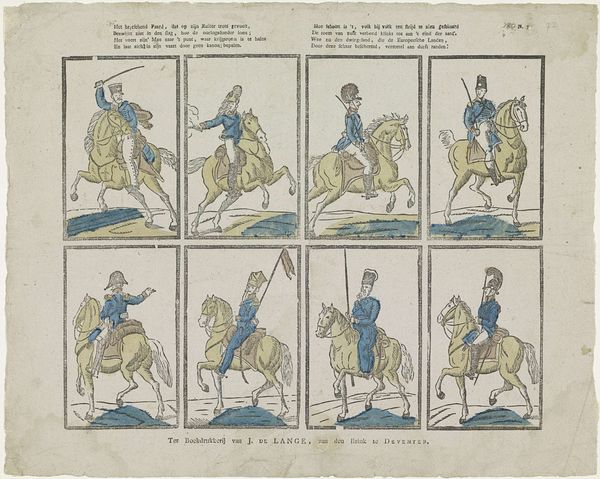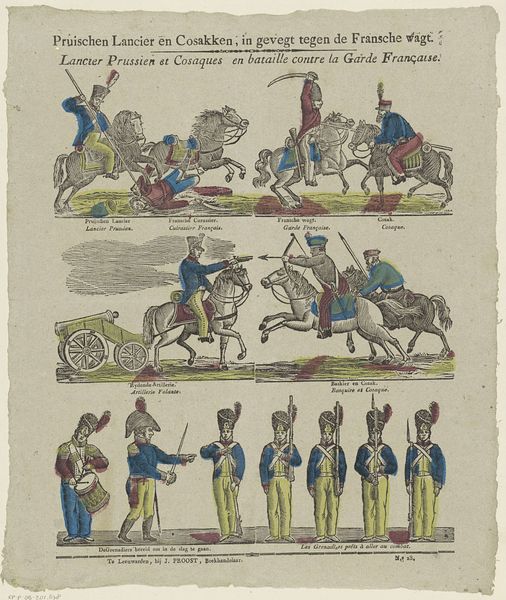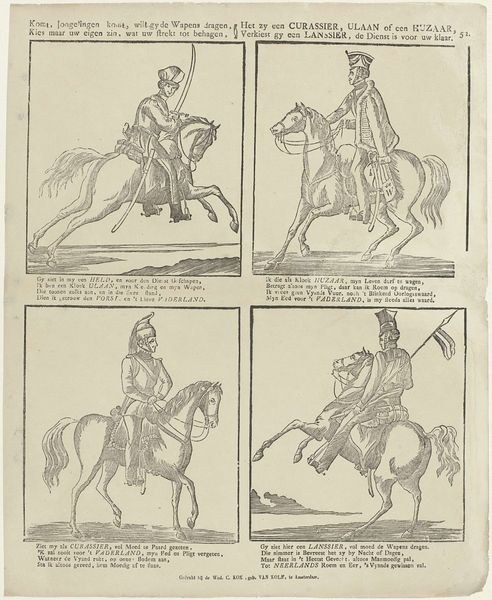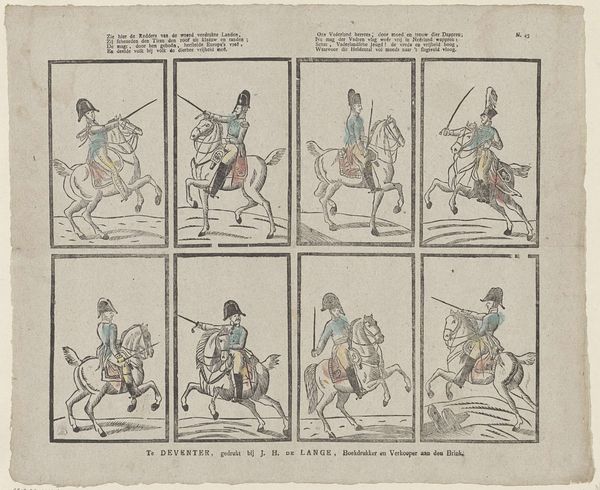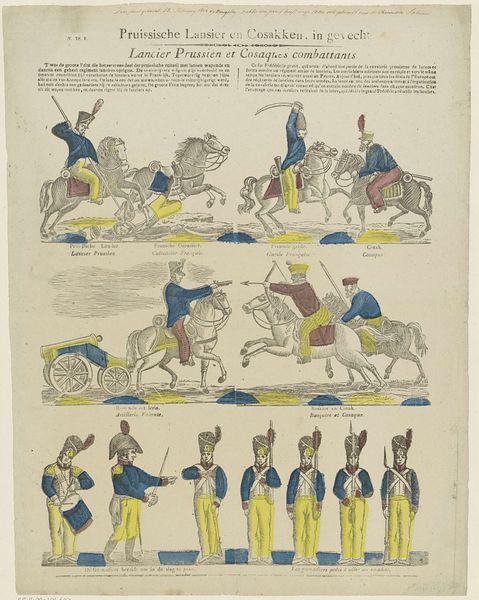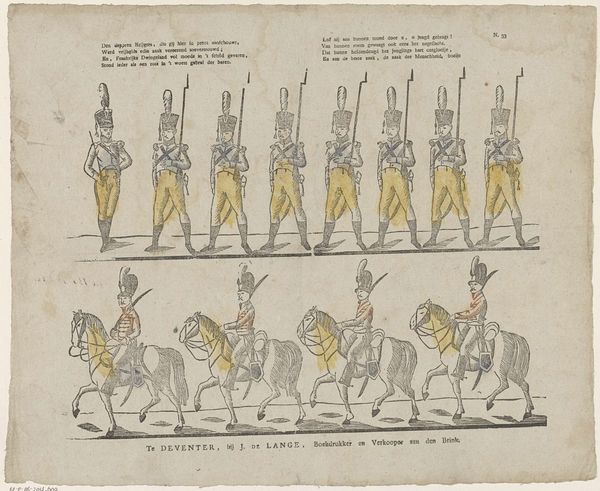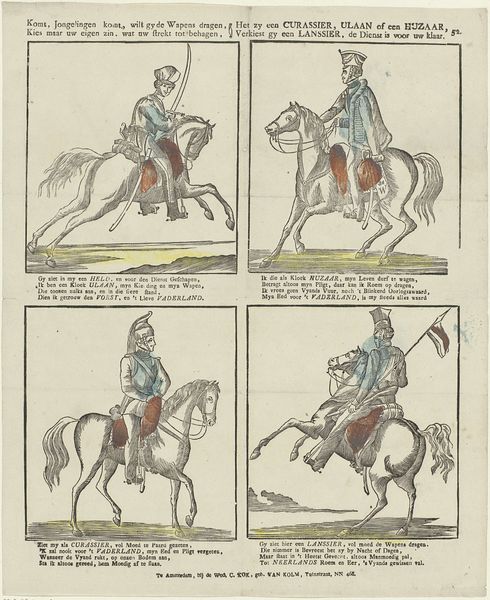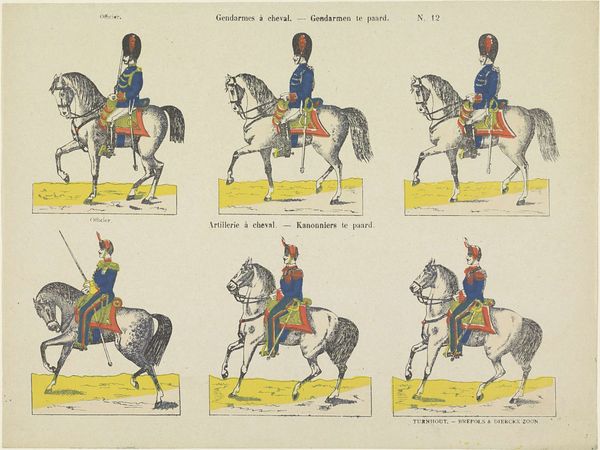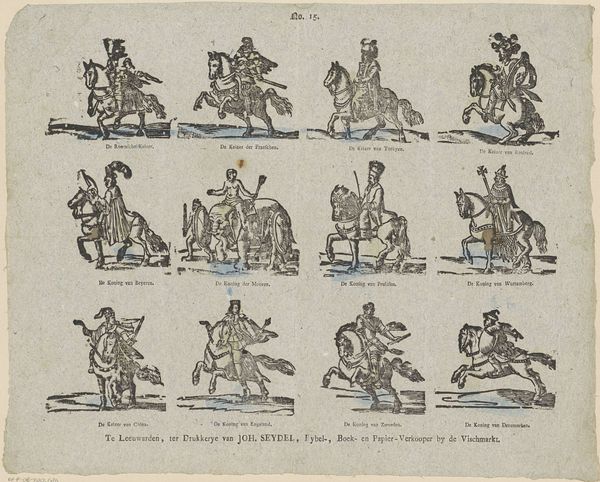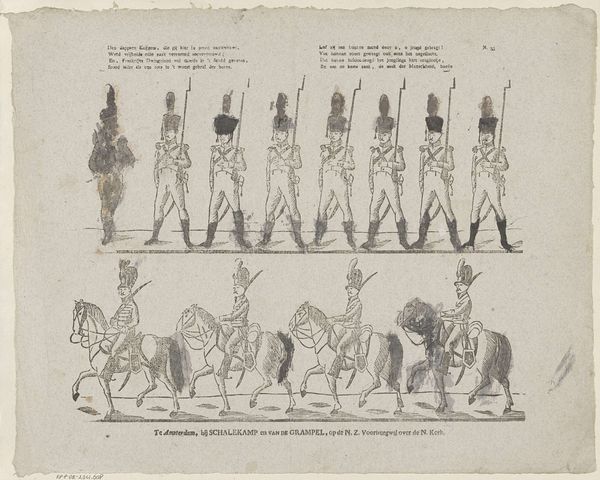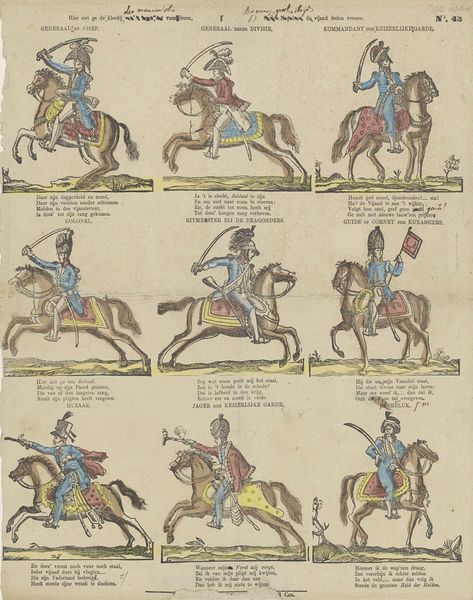
Ziet lieve jeugd! Hier vier huzaren. / Die voor hun vorst het land bewaren 1836 - 1849
drawing, print, engraving
drawing
blue ink drawing
narrative-art
dutch-golden-age
figuration
romanticism
line
genre-painting
history-painting
academic-art
engraving
Dimensions: height 432 mm, width 339 mm
Copyright: Rijks Museum: Open Domain
Editor: This is quite a fascinating print! It's called "Ziet lieve jeugd! Hier vier huzaren. / Die voor hun vorst het land bewaren," which roughly translates to "Look, dear youth! Here are four hussars. / Who protect the country for their prince." It's by D. Lijsen, dating from the mid-19th century, and looks like an engraving or etching. The style reminds me a bit of naive art. What's striking is how the image of soldiers seems to present almost toy-like horses; they strike almost ridiculous, exaggerated poses. What is your reading of this piece? Curator: Well, let’s consider the context. This print dates from around 1836-1849. Europe was still very much dealing with the aftermath of the Napoleonic Wars. Even though the Netherlands had regained independence, the idea of national identity and loyalty to a monarch was being actively constructed and promoted through various forms of popular culture. This print seems to be a part of that phenomenon. Editor: So, the 'naive' quality isn't necessarily a lack of skill, but maybe a deliberate choice related to appealing to a wider audience, to help disseminate these ideologies? Curator: Exactly. And notice how the image is paired with a moralistic verse, which further suggests this was created for didactic purposes—perhaps even for children. The heroic, Romantic figure of the hussar is simplified and repeated, becoming an easily digestible symbol of patriotic duty. But think about the politics of imagery, what could this oversimplification and dissemination of ideals mean at the time? Editor: So, by focusing on its accessibility and popular appeal, we can see how it was deployed as a tool for shaping national identity and promoting loyalty during a specific historical moment. I appreciate the shift in perspective, focusing less on aesthetic finesse and more on its role in broader social and political narratives. Curator: Exactly! Understanding its place in the visual culture of the time enriches our understanding so much.
Comments
No comments
Be the first to comment and join the conversation on the ultimate creative platform.
